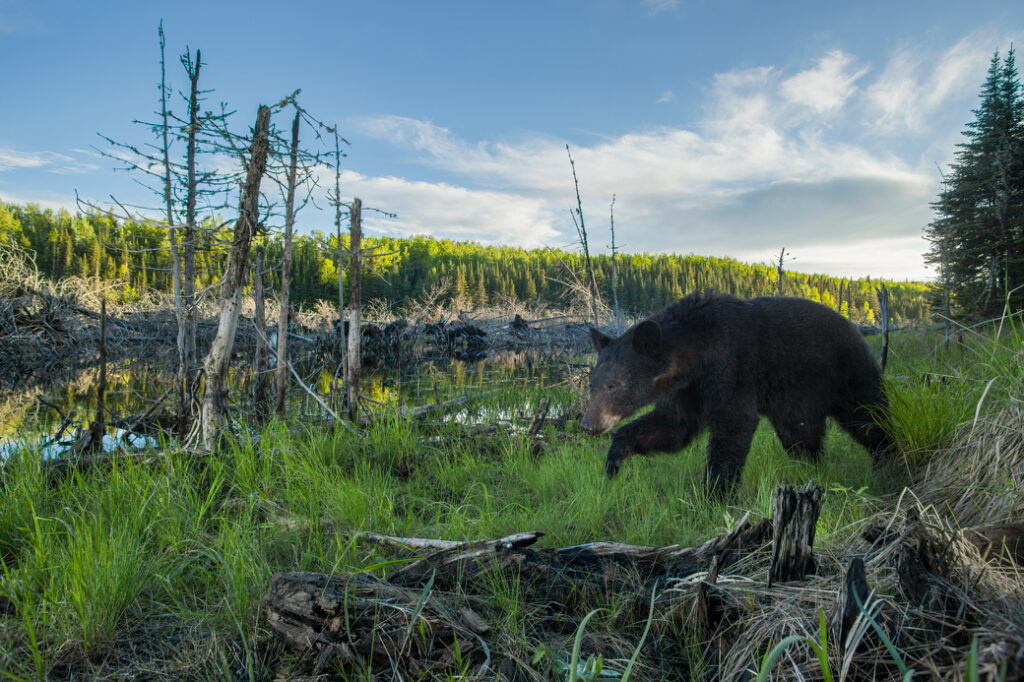
“Don’t you worry about critters?”, the woman I’d just met asked me. “You mean, like wolves and bears?”, I asked. I’m often meeting people at trailheads and campgrounds when I’m out on my own, and a woman traveling, camping, and hiking solo is still impressive to many. And when we get talking and I share stories about my longer and more remote adventures, people are in awe. The first thing they ask about is my safety. Unfortunately, as a woman, there is much more I need to be aware of and prepared for. That’s usually the first topic of conversation, quickly followed by how I handle camping with bears in the Minnesota northwoods. My husband is asked about wildlife encounters just as often.
So I thought it would be helpful to share some personal stories about the realities of wildlife in Northeast Minnesota. There’s a lot to cover when considering how we share space with wildlife in the enchanted forests of the Superior National Forest, BWCAW, and Voyageurs National Park. Because of that, I’m going to break this article into two parts. Since our human practices and behaviors can have such a profound effect on bears, I’m going to dedicate one full article to them. Make sure you don’t miss the next one where I cover everything else. Including some frustrating forest critters, you may not have considered.
Should you worry about camping with bears in Northeast Minnesota?
I still remember how worried I was about bears on our first tent camping trip in Minnesota’s Superior National Forest. I had no experience with bears and the thought of having one raid our campsite or bluff charge me on the trail was a very real concern. And to be completely honest with you, it took a couple of years to get comfortable with the idea that anything could be lurking outside the door of my tent while I tried to sleep soundly at night.
But after years of research, practice, and experience on the trail, I eventually became more and more comfortable sharing space with all the creatures who call Northeast Minnesota their home. With all of our adventures and practice outdoors, it wasn’t until I’d spent 13 years hiking and 8 years tent camping that I had my first bear encounter. It was exhilarating and terrifying at the same time.
My first bear encounter
It was a perfect fall Sunday and I was out on a long solo hike. Unlike when I’m walking around or hiking at home, I rarely listen to anything when I’m in the forest I hold so dear. Sometimes my mind runs in circles, caught up in my thoughts. Other times I’m completely present to every chirp of a bird and rustling of pine needles. Most of the time I oscillate between both states, even though I prefer to spend more time in the latter.
There was a crispness to the air and that unmistakable smell of fall. I was beginning to step out of the moment and worry about everything I needed to take care of in the coming week when a rustling in the woods pulled me back into the present. It’s probably a couple of squirrels, I thought, as I scanned over to the right where the sound originated. I couldn’t believe what I saw just 10 feet away from me. Two adorable black bear cubs were halfway up a tree, staring at me. My first instinct was to grab my phone and snap a photo. Then a wave of panic washed over me and a wiser set of instincts kicked in.
In a fraction of a second, I realized that I could be standing in between these cubs and their mama bear. I better start moving, I thought, and fast. I slid my phone back from where I’d grabbed it, looked around, and began hiking, much more quickly, in the direction I was headed. I kept my senses on high alert for mama bear much longer than I needed to. Thankfully, I never saw her. But as I reflected on this unforgettably awesome experience, I was grateful for all the time I’d put into learning wilderness best practices when we first started exploring the outdoors.
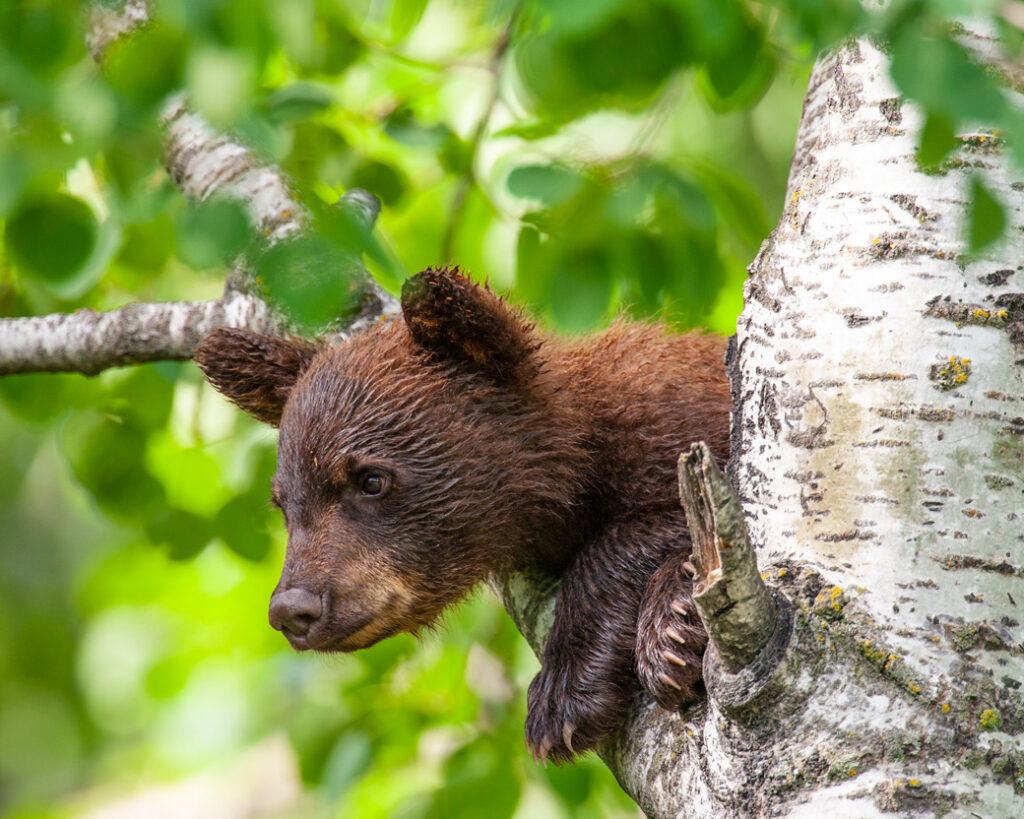
When camping with bears becomes a problem in Minnesota
I will never forget a call I made to a government forestry office during pandemic times when everything was shut down. Normally when we’re picking up permits, we have the opportunity to ask about what’s been going on in the local area with bugs, fires, wildlife, and if we’re lucky, a fishing tip or two. But since everything was on lockdown, I thought it would be a good idea to check in via phone.
If you were around the outdoors these years, you likely heard your fair share of reports of misuse, vandalism, and bear interactions. So I thought my question—Have there been any bear issues in the area—was a smart one to ask. I will never forget the response that day. “We don’t have bear issues,” the voice grumbled. “We have people issues.” “Okay, then,” I said, “Have there been any people issues?” “Yes, but not with bears where you’re headed,” they said in a more lighthearted tone.
My husband and I have a good chuckle every time we discuss this conversation. This government employee surely had a few challenging years at work with all of the changes and policies that were out of their control. But there’s also a lot of truth about camping with bears in Minnesota that we can take from their response.
Ever since my run-in with the bear cubs, I’ve had many more bear encounters. Mostly because I’m often alone and an extremely quiet person. I can tell you with a good amount of confidence that in every situation, the bear was more scared of me than I was of them. There was one instance when I had to hold my ground, which I’ll tell you about later. But even then, once the bear realized what was going on, he was more than eager to saunter off.
I am far from an expert on black bears, but this is what I understand. Bears are naturally fearful of humans unless they become “habituated,” sometimes called “food-conditioned.” When a black bear learns to associate humans with food, that’s when they’re on the way to becoming what some refer to as a “nuisance bear.” And since we humans are visitors when we’re camping in the bears’ home, I believe it’s our responsibility to do everything we can to protect them, ourselves, and other users of these majestic public lands. As the 1964 Wilderness Act states, the wilderness is “an area where the earth and community of life are untrammeled by man, where man himself is a visitor who does not remain.”
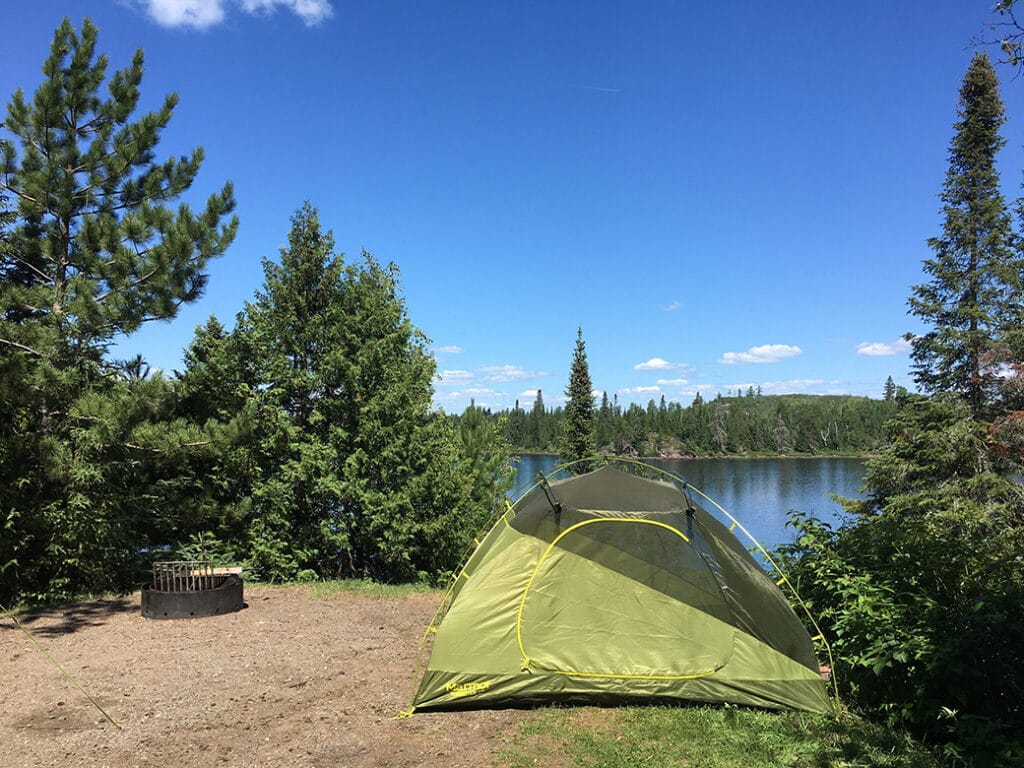
Best practices for camping with bears in Northeast Minnesota
Let me start by sharing another personal philosophy. I believe it’s usually a good idea to be extra cautious. As it pertains to camping with bears in Minnesota, I don’t know of anyone who would want to cut a trip short, or have to hike or paddle for three days without food, if a bear ran off with their supplies.
Another thing to note as you read through these best practices is that much of this pertains to backcountry camping, whether by foot or paddle. It is much more simple if you’re camping with a vehicle. Simply make sure anything with a scent—food, coolers, trash, toiletries, bug spray—is secured in a hard-sided vehicle. When the Forest Service issues food storage orders, they also suggest covering coolers stored in vehicles with a blanket. I haven’t heard of a bear in Minnesota getting this crafty, but it doesn’t hurt.
Also, keep in mind that this only pertains to black bears. If you will be camping in areas with other species of bears, please do your own research and due diligence. There are many more considerations to be aware of when camping in grizzly bear country.
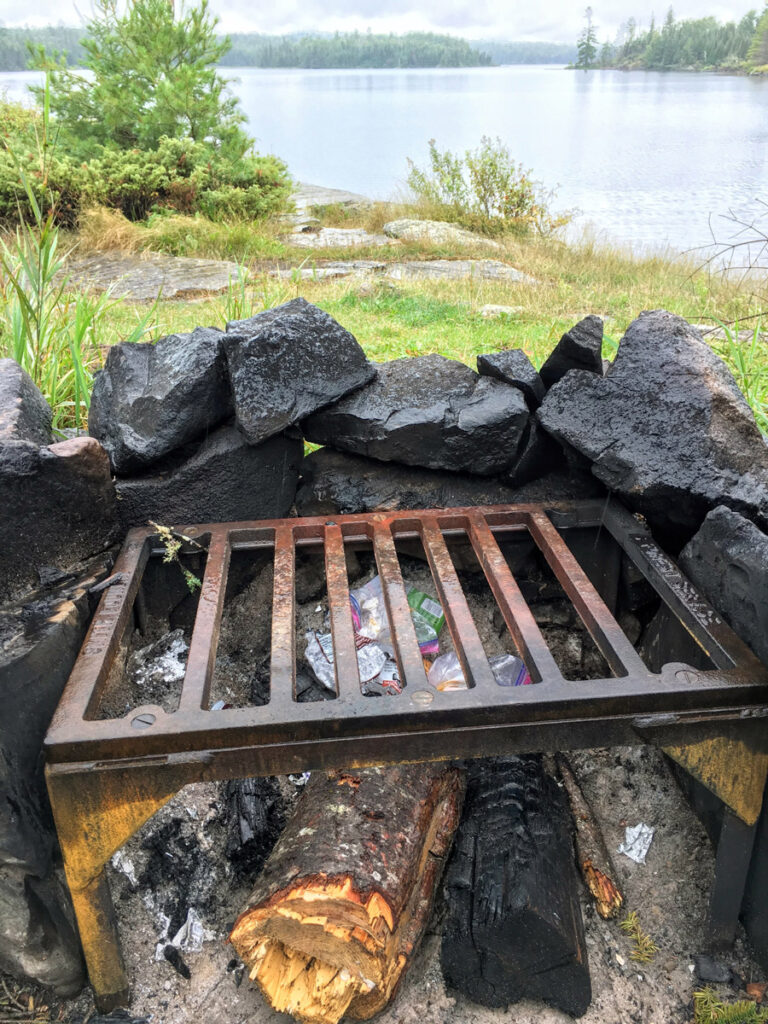
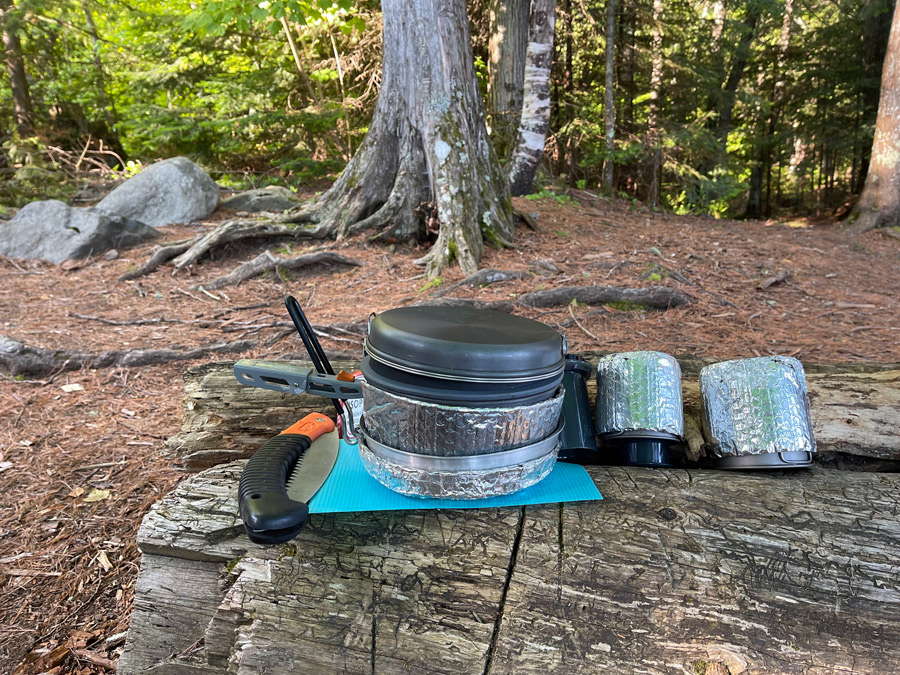
Keep a clean camp
The first thing you should consider when planning a camping trip in bear country is how you’ll store your food and keep a clean camp. Bears are known for their keen sense of smell, so leaving dirty dishes and food unattended is an open invitation to a curious black bear.
Here are some tips to consider when planning your next camping trip in Minnesota bear country. Avoid scented items as much as possible. I aim to buy unscented soaps, hand sanitizer, and sunscreen. If you pack any scented items, be sure to store them away from your tent, with your food. This could include things like toothpaste, bug spray, and deodorant. I like to go a step further and pack everything in reusable odor-proof bags. I imagine these aren’t truly odor-proof, given the bears’ keen sense of smell, but it cuts down most of the odor. They also help keep your food and toiletries dry on trips when the weather is not on your side. Don’t forget to pack an extra for your trash.
On the topic of food storage, I follow the Forest Service’s Food Storage Order, even if there technically isn’t an order in place. Firstly, I don’t want to have to hike three days back to my vehicle with no food. Secondly, I truly care about the safety of bears and other wildlife, as well as my fellow outdoor adventurers.
We always store our food in “Bear resistant containers.” This “means a securable container constructed of material capable of withstanding 200 foot-pounds of energy (using the approved bear-resistant container impact testing machine). When secured and under stress the container will not have any cracks, openings, or hinges that would allow a bear to gain entry by biting or pulling with its claws. Wood containers are not considered bear resistant unless they are reinforced with metal.” – US Forest Service, Superior National Forest, July 30, 2021. A full list of approved containers can be found here.
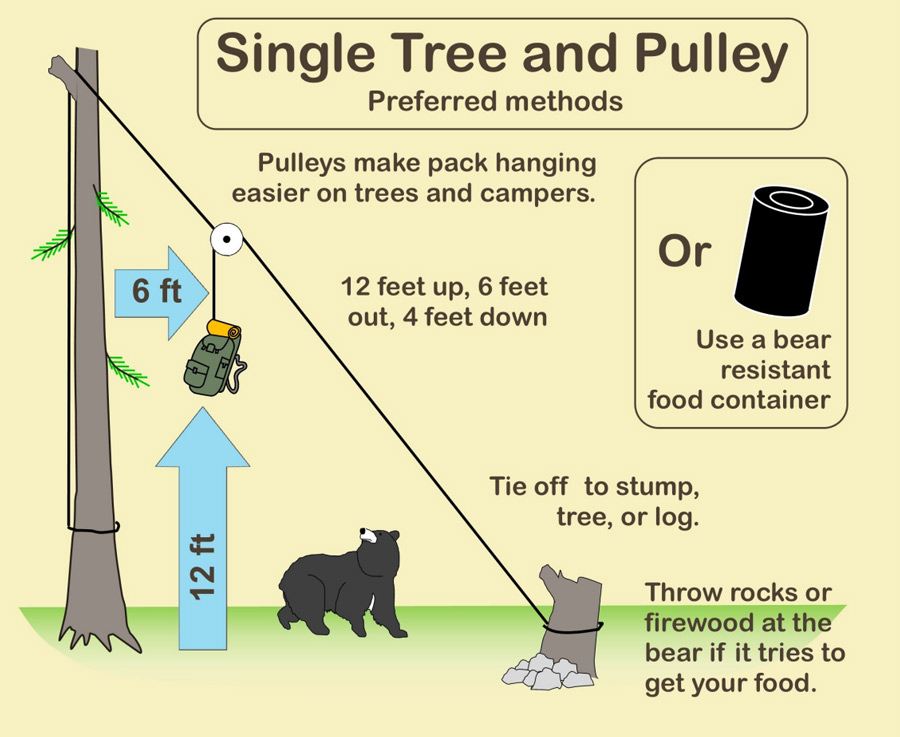
The great thing about using bear-resistant containers is that the bear is unlikely to get a reward and this means they don’t learn to associate humans with food. But I understand that there is a considerable expense to outfitting yourself with these products, especially if you have a large family or take longer trips. There is also the option to hang your food pack. The Forest Service suggests, “Hanging your food pack at least 12 feet above the ground at all points, six feet horizontally from any pole or limb and four feet vertically from any pole or limb. Please be mindful of the weight of your pack while hanging it to avoid breaking branches and damaging live trees.” If you’re planning to hang your food, come prepared with enough supplies to use the “Clothesline” method when necessary because it’s often necessary. This was our main motivation to move to bear-resistant containers. You can find diagrams of bear hangs here.
If you study the BWCAW Rules and Regulations, you will see that it is illegal to burn trash of any kind. Leftover food must be packed out and not left in latrines or anywhere in the park. On days when we’re not as hungry, we’ll make half of our meal. If we’re still hungry after, we’ll cook the rest. This way we don’t have heavy rehydrated leftovers to pack out.
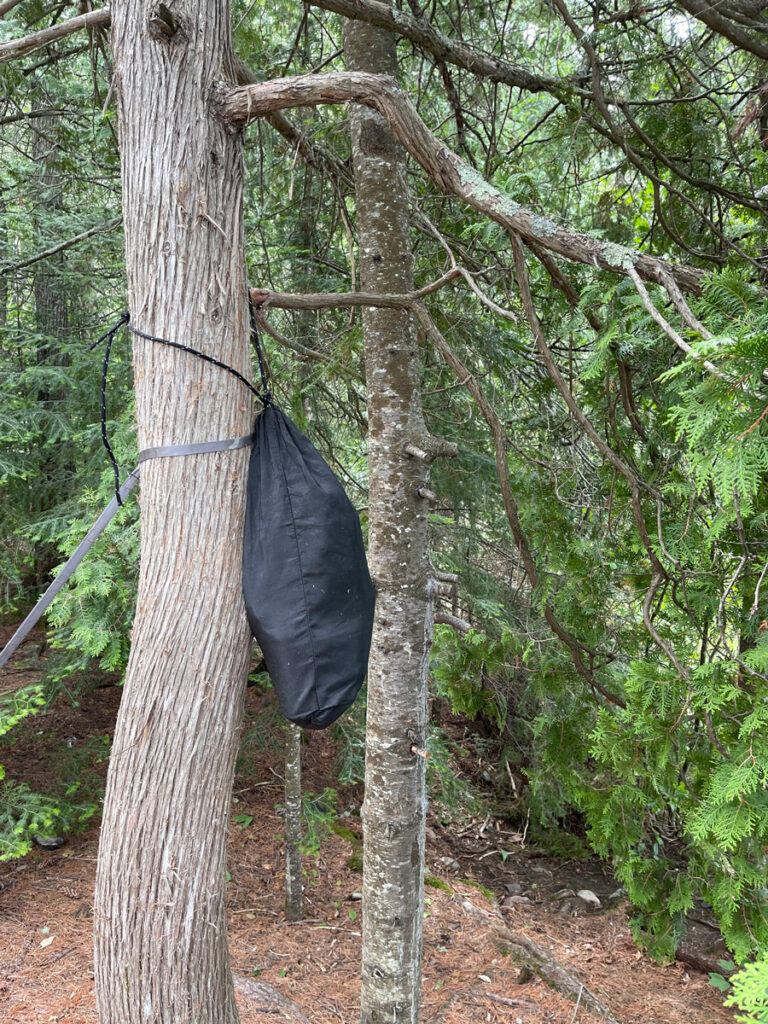
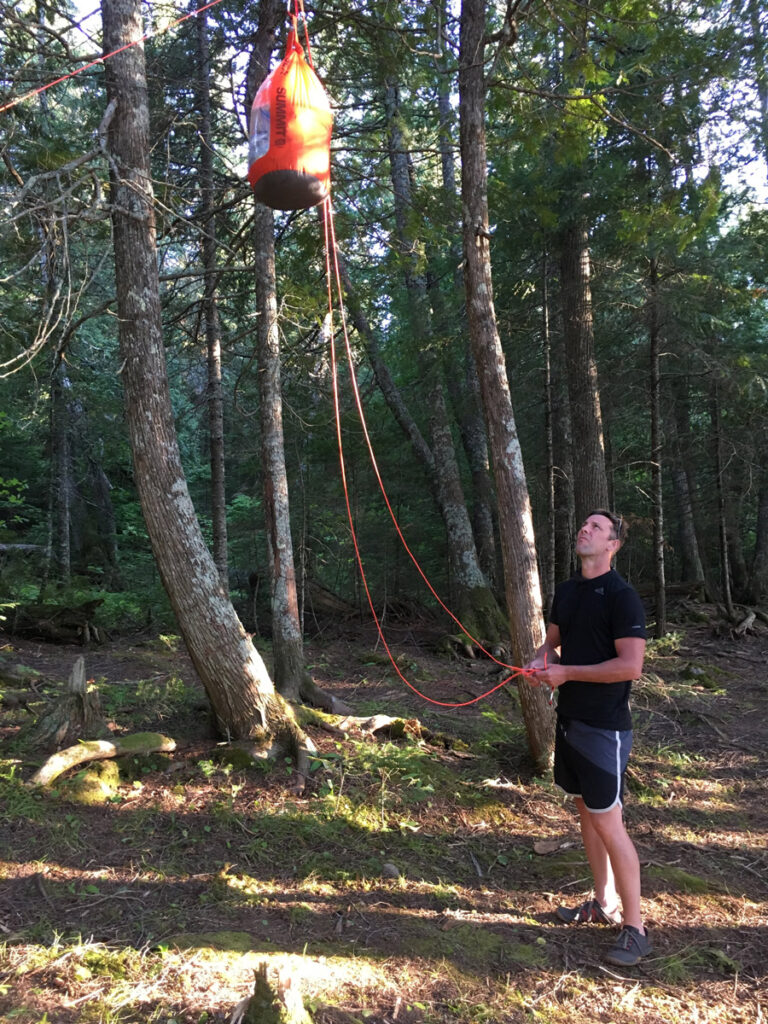
How to handle a bear encounter while camping in Minnesota
“Hey bear,” I said in a calm and even tone. “Hey bear,” I said a little louder as he sat in the middle of the trail gorging on that year’s abundance of berries in Voyageurs National Park. “Hey bear,” I felt like I was shouting now. This was the only trail back to where I’d parked my car and I was starting to feel a little nervous. I didn’t want to startle or upset the bear, so this time I shuffled my foot on the trail as I spoke a little more firmly, “Hey bear.” This time he heard me and sauntered off the trail some distance to continue his berry binge.
This is the only time I’ve had a bear encounter when it didn’t run for the hills when it got a sense of me. It was also near a Voyageurs National Park Visitor Center so it may have been more used to humans. Either way, if you’re someone who enjoys trekking in the backcountry, you should be familiar with what to do in this situation.
I have never had a bear come into camp while camping in Northeast Minnesota. And as much as I love seeing them in the wild, I hope I never do. But I have seen them plenty of times on the trail and while paddling. I feel that it’s important to mention that in every one of these encounters, I’ve been alone. When I’m with others, we’re so busy talking, laughing, and making noise, bears are long gone before we could ever sense they were there. That said, a “habituated” bear is a different animal who craves your Doritos more than she fears you.
Be Bear Aware
The US Forest Service has a great Bear Aware guide you can find here. It covers a lot of what I’ve shared with you. Here are more tips to keep in mind if you ever see a black bear.
Stay calm. Don’t panic and don’t run. In addition, I do my best to not turn my back on the bear. If you’re with others, group together. Whether you’re alone or with others, make yourself bigger and make noise. If we ever meet on the trail, be sure to ask me to show you what I do. If nothing else that day, you’ll have a good laugh.
Many people ask me about bear spray. I don’t think it’s necessary while camping with black bears in Minnesota. That said, I might reconsider if I were traveling through an area where there were known “nuisance” bears.
Bear attacks are extremely rare, and with the right knowledge and habits, something that I don’t worry about. That said, black bears should be taken seriously, for your safety, the safety of others, and the bears. If you do have a notable bear encounter, report it to the public land manager for the area you’re visiting. In Northeast Minnesota that could be any of the wonderful state parks, the Superior National Forest and BWCAW, or Voyageurs National Park.
By being prepared, practicing good wilderness ethics, and leaving everything better than you found it, you can have a safe and fabulous time camping in Northeast Minnesota’s bear country. By remembering that we’re visitors to their peaceful and beautiful home, we’ll create better experiences for ourselves, others, and the forest’s beautiful black bears.
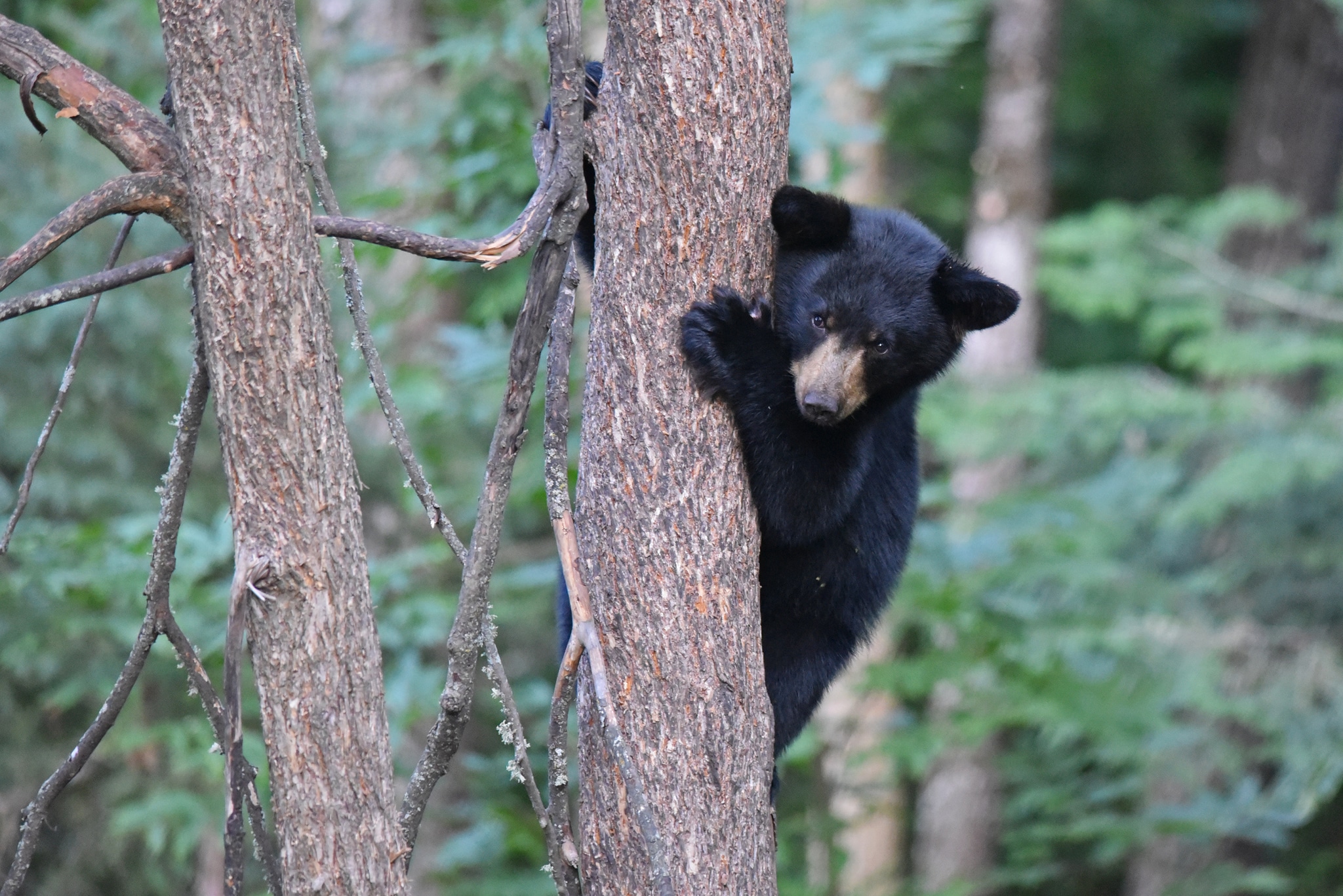
Learn more about camping with bears in Northeast Minnesota below
- US Forest Service Bear Aware Guide
- US Forest Service – How to hang a bear bag and trash
- The 7 Principles of Leave No Trace
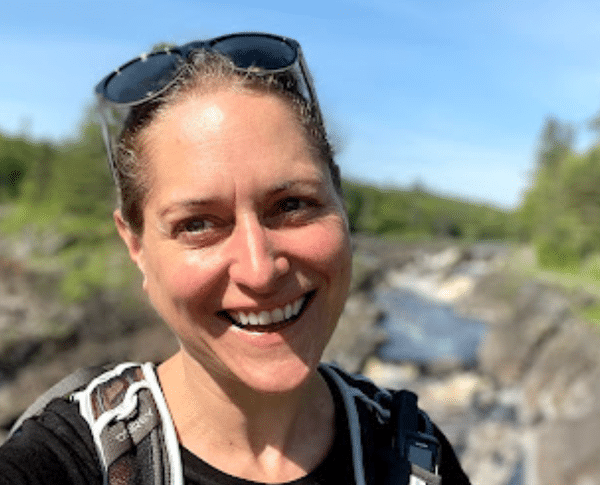
Holly Scherer is a Minnesota-based writer, photographer, outdoorswoman, and guide. She’s most at home in the great outdoors; camping, hiking, paddling, cycling, and gardening. When she’s not on an adventure, she and her husband live in the Twin Cities where they’re fond of saying, “home is where we store our outdoor gear.”

